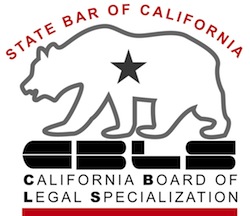You can look a long time in the Bankruptcy Code without finding Chapter 20.
Chapter 7 is there; so are Chapters 11 and 13. But no 20.
But you find it in bankruptcy courtrooms and in the arsenal of good bankruptcy lawyers.
So, what’s up?
Chapter 20 is really bankruptcy slang. It’s a Chapter 7 case followed by a Chapter 13. Together the two chapters, 7 plus 13, make a “Chapter 20” case.
Why would you need two bankruptcy cases? Let’s explore.
Chapter 20 beats the debt limits
All of the powerful provisions and flexibility of Chapter 13 are only available to individuals whose debts are under the Chapter 13 debt caps.
Go over the limit for either the unsecured or secured debt cap and you aren’t eligible.
Enter Chapter 7. There are no debt limits in Chapter 7. You can owe as much or as little as may be and still be entitled to file Chapter 7.
The Chapter 7 discharge can be expected to wipe out your personal liability for most unsecured debts and allowing you to fit into Chapter 13.
The power of Chapter 13
The things Chapter 13 can do that Chapter 7 can’t so is long and enticing.
- Getting time to get current on mortgages
- Paying off taxes that didn’t go away in Chapter 7
- Stripping liens down to the value of the collateral
- Providing a forum for a lawsuit against your lender
- Reducing the interest rate on usurious car loans
Any one of those things might be necessary to get a genuine fresh start.
No discharge in Chapter 20
Since bankruptcy “reform” in 2005, someone who files a Chapter 13 right after their Chapter 7 doesn’t get a discharge in the Chapter 13 case.
Four years must pass between the filing of a Chapter 7 and the filing of a Chapter 13 for a discharge to be available in the Chapter 13.
So what you get in the no-discharge 13 is the opportunity to strip liens; satisfy secured claims; and get current where you want to. Debts where your personal liability wasn’t discharged in the Chapter 7 that don’t get paid in full in the following 13 will live past the end of the second case.
A powerful consensus is building in the courts that debtors can strip off underwater mortgages on their homes even in bankruptcies where they don’t get a discharge. But in Chapter 20, you’ve already gotten a discharge of your personal liability on the debt, so it’s not a big deal.
The power of 13 is dealing with the liens that survive the Chapter 7.
Automatic stay applies
The restrictions on the automatic stay where you’ve had several bankruptcy cases pending during the year don’t apply to the no-discharge Chapter 13.
Why? Because the first case, your Chapter 7 case, was not dismissed. Rather, it concluded, as it should, with a discharge.
Understanding the difference between dismissal and discharge
Bankruptcy in a rising market
Chapter 20 becomes appealing when the debtor’s prospects are improving. When real estate is rising or a positive change in your earning power is in the offing, having that increased prosperity exposed in the first instance to a Chapter 13 trustee is scary.
The law is clear that a Chapter 13 debtor’s earnings during the Chapter 13 may trigger a motion to increase plan payments after confirmation. It’s less clear what the impact of increased property values, property sales, or inheritances are on the rights of creditors in Chapter 13.
So, if better times are likely ahead, a Chapter 20 works to par down the list of creditors who have unsatisfied claims in the Chapter 13. The Chapter 7 discharge has wiped out most of those creditors and the remaining creditors are ones you want/need to pay anyway.
Bravo for Chapter 20.
More
The automatic stay when you refile a dismissed case
Image courtesy Pixabay.






